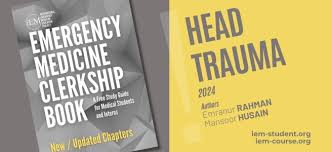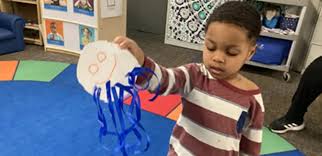Classroom management is one of the most important skills for middle school teachers to master. Middle school students are in a unique phase of development, navigating changes in their academic and social lives. As such, teachers need to be prepared to handle a wide range of behaviors and challenges in the classroom. Effective classroom management creates a positive learning environment that encourages student engagement, reduces disruptions, and helps students succeed. Here are some essential classroom management tips for middle school educators to foster a productive and respectful classroom environment.
1. Set Clear Expectations from the Start
One of the most effective teaching tips for middle school is to establish clear classroom rules and expectations on the first day of school. Middle school students need structure and consistency. When students understand what is expected of them from the beginning, they are more likely to follow the rules and engage in positive behaviors. Display the rules in the classroom, review them regularly, and reinforce positive behavior with rewards and recognition.
2. Build Positive Relationships with Students
Building strong, trusting relationships with middle school students is key to effective classroom management. When students feel respected and understood, they are more likely to respect their teacher and follow directions. Take the time to get to know each student as an individual, show genuine interest in their lives, and listen to their concerns. Positive relationships foster a classroom culture of respect, which is essential for reducing disruptive behaviors.
3. Be Consistent with Discipline
Consistency in discipline is vital when managing middle school classrooms. Students will test boundaries, but clear and consistent consequences for misbehavior help them understand what is acceptable. It’s important to follow through with consequences that you’ve outlined and to be fair across the board. Keep in mind that middle schoolers are still developing emotional regulation skills, so it’s important to be patient and offer guidance alongside discipline.
4. Use Proactive Strategies to Prevent Disruptions
Preventing disruptions before they occur is one of the most effective classroom management tips for middle school educators. Proactive strategies include maintaining a structured routine, using engaging and dynamic lessons to capture students’ attention, and varying activities to keep students interested. Giving students clear instructions and anticipating possible distractions can also prevent disruptions from happening. The more prepared you are, the fewer interruptions you’ll encounter.
5. Implement Group Work and Collaborative Learning
Middle school students benefit from collaborative learning, where they have the opportunity to interact with their peers. Structured group work helps students develop social skills and can keep them engaged in the lesson. However, it’s important to set clear guidelines for group work, such as how to communicate respectfully and work together productively. When students know what is expected during group activities, they are more likely to stay on task and work cooperatively.
6. Keep Students Engaged with Hands-On Activities
Middle school students can quickly lose interest if lessons are too monotonous or if there isn’t enough interaction. Incorporating hands-on activities into lessons keeps students engaged and provides opportunities for them to learn through experience. Whether it’s science experiments, creative writing, or collaborative projects, hands-on activities allow students to actively participate in their learning, which helps reduce off-task behavior and creates an enjoyable classroom atmosphere.
7. Encourage Student Autonomy and Responsibility
As middle school students grow, they crave more independence. Giving students some autonomy in their learning can help them feel more responsible and invested in their education. Allowing them to make choices about projects, topics, or even classroom routines can help promote ownership and self-discipline. When students have the opportunity to contribute to decisions in the classroom, they are more likely to respect the rules and stay engaged in learning.
8. Provide Regular Feedback and Support
Frequent feedback is crucial for middle school students’ growth and motivation. When students receive positive reinforcement and constructive feedback, they are more likely to make improvements in their behavior and performance. Offer praise when students follow expectations, and provide specific feedback when areas for improvement arise. Additionally, be proactive in offering support to students who may struggle with classroom routines or academics.
9. Adapt to the Needs of Individual Students
Every student is different, and some may need more support than others to succeed in the classroom. One of the best teaching tips for middle school teachers is to adapt your management strategies to meet the individual needs of students. Whether it’s providing extra attention for a student who struggles with social cues, offering more time for an assignment, or implementing a behavior plan, tailoring your approach helps ensure all students have an equal opportunity to succeed.
10. Stay Calm and Composed
Middle school students are in a period of emotional and social change, which means they may be more prone to outbursts or emotional reactions. As an educator, it’s important to stay calm and composed, even in challenging situations. Model emotional regulation by responding to disruptions calmly and respectfully. When students see that you can maintain your composure, they are more likely to mirror your behavior and handle conflicts in a more mature manner.
Conclusion
Effective classroom management is crucial for creating a positive and productive learning environment in middle school classrooms. By setting clear expectations, building positive relationships, using proactive strategies, and offering support, teachers can foster an environment where students thrive. Remember that every classroom is different, and adapting to the unique needs of your students will help you become a more effective educator. With these teaching tips for middle school, you’ll be better prepared to handle the challenges and celebrate the successes of your students.




